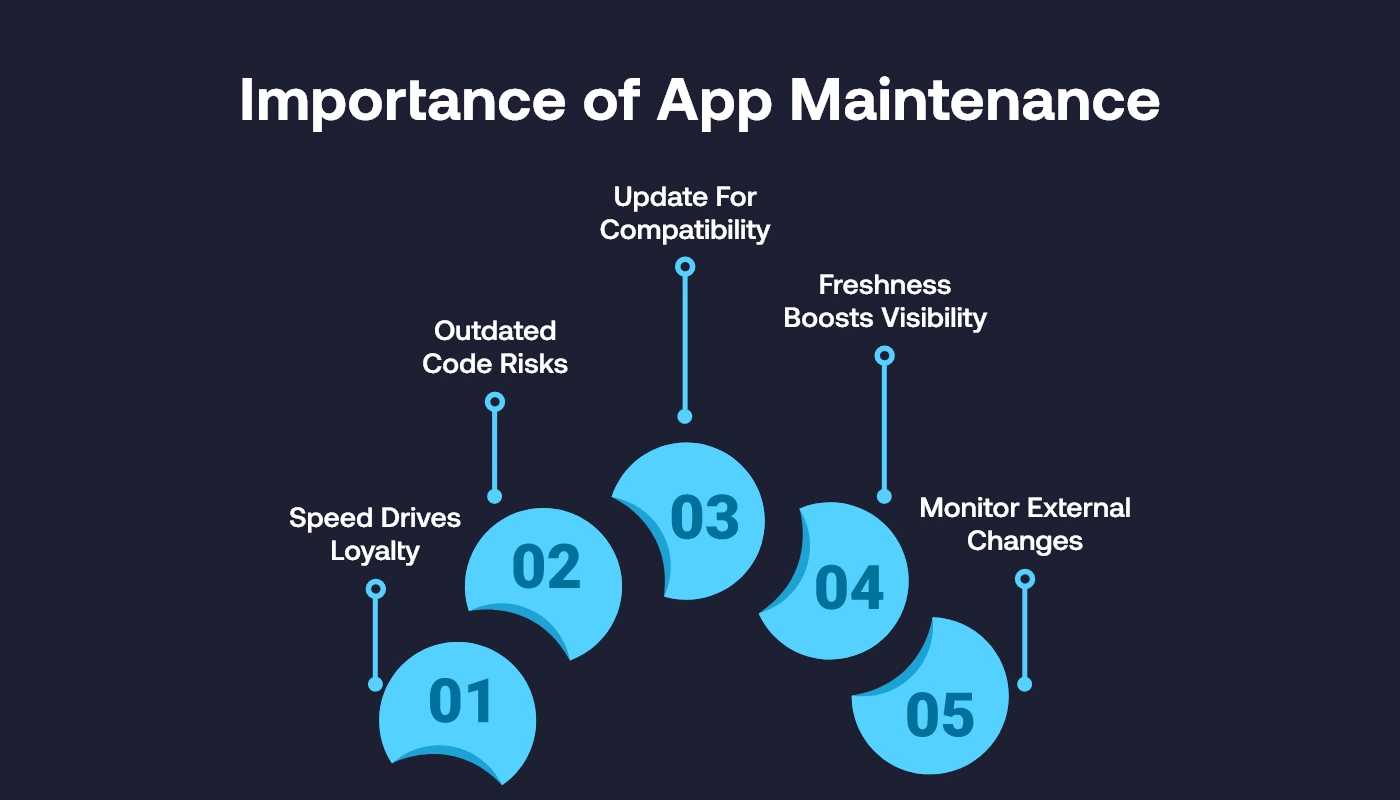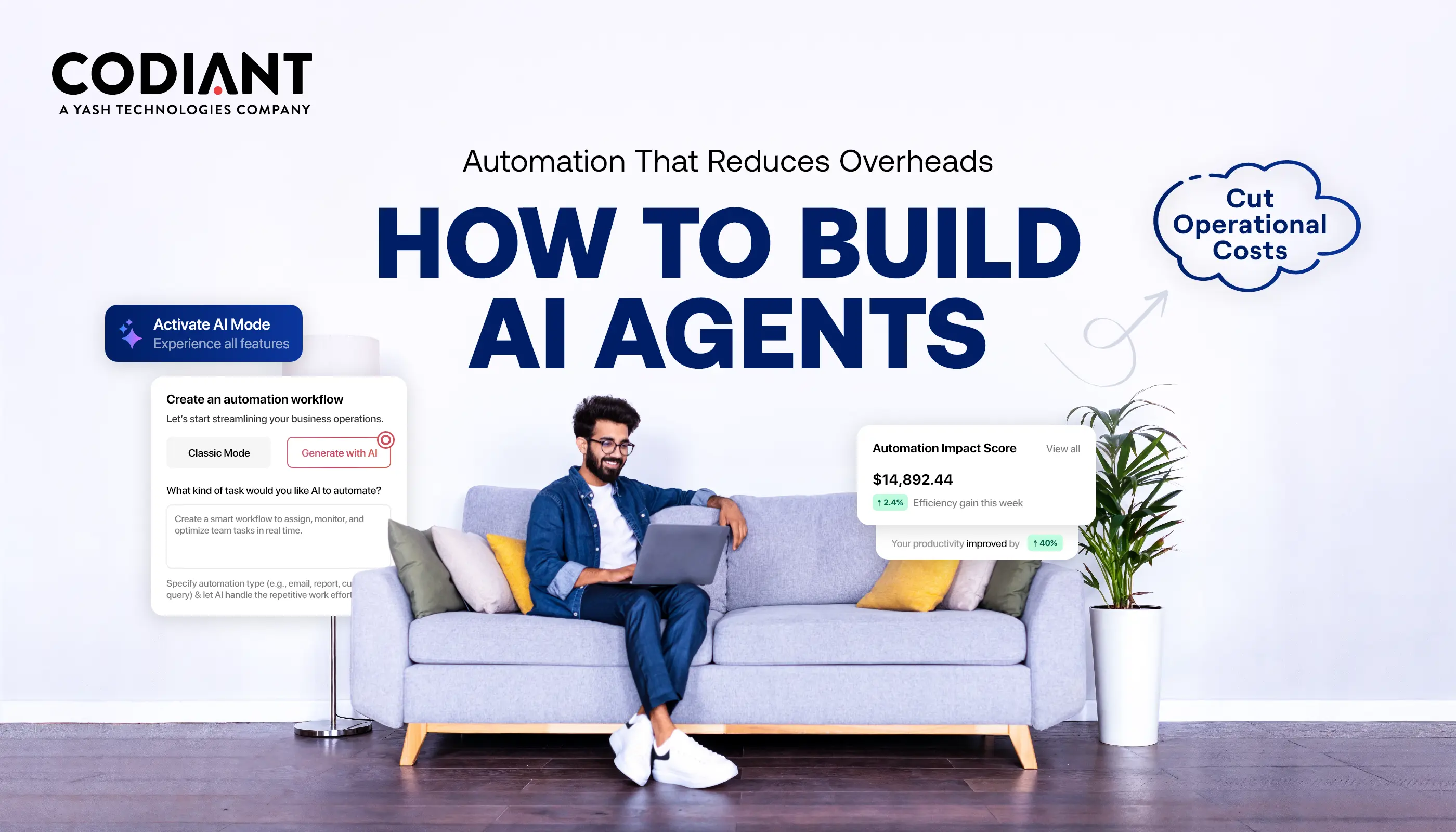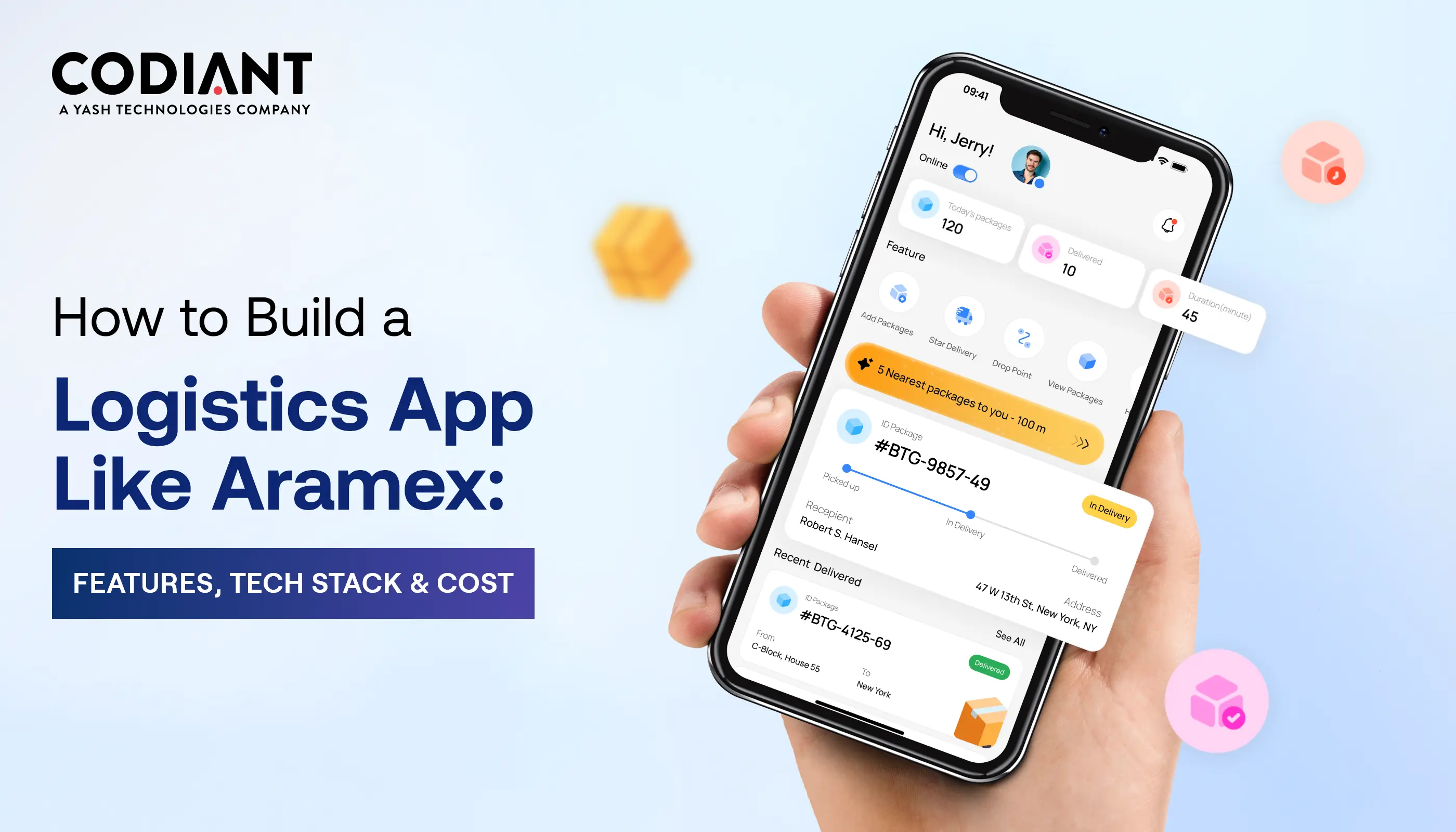How Much Does It Cost to Maintain an App in 2025?
Table of Contents
Subscribe To Our Newsletter

App development doesn’t end with launch; it actually starts here. In 2025, keeping your app up and running isn’t something to be handled by IT experts, it’s a major part of your business strategy. Whether you’ve developed a lean MVP or a full-scale SaaS platform, knowing how much does it cost to maintain an app helps you plan your budget, manage total cost of ownership, and make sure your product can scale without wonders.
At Codiant, we often meet clients who planned meticulously for app development but underestimated the ongoing mobile app maintenance costs. This leads to delayed updates, rising bugs, poor reviews, and in extreme cases, complete rewrites.
If you’re asking, “how much does it cost to run an app in 2025?” or “how much does it cost to keep an app running?”, this guide breaks down every factor, benchmark, and task that goes into app maintenance cost—from infrastructure to optimization to user experience.
Let’s break it down.
Why App Maintenance Matters More Than You Think

Apps that aren’t updated fall behind. Here’s why maintaining your mobile app post-launch matters more than ever:
- User Retention Relies on Performance
Even the app with an appealing UI/UX loses its value over time if it is slow and getting crash frequently. Unaddressed problems push users toward faster and more responsive ones. As expectations grow, the cost to maintain an app also includes preventing revenue loss from poor retention.
Data shows apps with regular updates see 2.5x higher retention over six months (Source: Statista). - Security Risks Evolve Daily
Leaving bugs or outdated tools in your mobile app is like leaving the door open for attackers. With standard data privacy laws applicable, using old SDKs or libraries can even lead to heavy fines. Regular maintenance keeps your app secure and compliant, so you don’t run into trouble.
GDPR and HIPAA fines for non-compliant apps can exceed $100,000 per incident, which is a cost far higher than regular updates. - Device and OS Fragmentation Increases Complexity
Devices like foldables, tablets, smartwatches, and updates like Android 15 and iOS 18 rolling in the market, it is quite typical to stay compatible. Regular updates aid your application to run smoothly on all platforms. Without this, users might get frustrated, give bad reviews, and even, stop accessing it. - App Store Rankings Are Tied to Freshness
Outdated apps lose visibility. Google play store and iTunes work on certain algorithms that prioritize recently updated apps with fewer crashes and better ratings. Maintaining your app gives signal that your app is active, safe, and worth downloading. - Third-Party Services Change Often
Every payment gateway, login API, or analytics SDK you use is updated independently. Maintenance ensures your app keeps working when these tools change.
Read more: Artificial Intelligence How Much Does It Cost to Build an AI Solution in 2025?
Ignoring third-party updates often leads to broken checkouts, login errors, or tracking failures—directly impacting business KPIs.
As user expectations, cybersecurity risks, and platform updates accelerate, one-time development simply doesn’t cut it. In fact, apps that aren’t updated at least once a month see 67% lower user retention. Businesses that approach maintenance proactively grow 2x faster and build longer-lasting user trust.
Want to Build a Maintenance Plan that Cuts Costs and Boosts Performance?
Codiant helps CTOs and founders slash firefighting by 40% with agile, budget-optimized 12-month app maintenance roadmaps
Key Factors That Drive App Maintenance Costs
App maintenance costs depend on several key factors. Have a look at some of the key factors driving maintenance costs.
-
App Architecture Type
App architecture comprises of native, hybrid, and web apps.
- Native apps are basically run on Android and iOS platforms. Such apps demand more coding, testing, and deploying updates.
- Cross-platform frameworks like Flutter or React Native can help decrease development time through code sharing. However, it needs device-specific testing to avoid further issues.
- Web applications are more focused on browser compatibility and backend processing to run on various resolutions and browsers.
Remember, the cost of app maintenance for native apps can be 30–40% higher annually.
-
Platform & Device Support
More devices including phones, tablets, and watches support your application, more complex the UI and QA adjustments are! As in, it demands to add new OS versions each year and so, the testing matrix grows swiftly.
Multi-device testing can raise mobile app maintenance costs by $3,000–$12,000 annually.
-
Hosting & Cloud Infrastructure
If you’re wondering how much does it cost to host an app, the answer varies based on usage and stack:
| App Type | Typical Hosting Platforms | Monthly Cost Range |
| Small Apps | Firebase, Vercel | $100 – $300+ |
| Mid-Scale Apps | AWS, Google Cloud (GCP) | $500 – $2,000+ |
| Enterprise Platforms | Microsoft Azure | $3,000 – $10,000+ |
-
Bug Fixing & Performance Tuning
No app stays bug-free. From minor UI glitches to major crashes, fixes are a major chunk of the cost of maintaining an app. Investing in performance optimization early reduces future firefighting costs.
-
Third-Party Integration Maintenance
Every API or SDK in your stack needs recent updates, testing, and possibly UI enhancements. Each of these add ongoing maintenance hours on an annual base.
API compatibility issues can disrupt payments, signups, or analytics—leading to direct revenue or insight loss.
-
Monitoring & Reporting Tools
Tools such as Crashlytics, Sentry, and New Relic cost money and also, it requires time of developers to maintain the app. All these tools offer critical real-time insights, crash logs, and performance dashboards.
App Maintenance Cost Benchmarks
If you want to know how much does it cost to update an app, consider the following app maintenance cost benchmarks.
| App Type | Monthly Cost Range | Annual Cost Range |
| MVP or Small App | $800 – $2000+ | $8000 – $20000+ |
| Growth-Stage App | $2000 – $7000+ | $25000 – $80000+ |
| Enterprise Platform | $6000 – $20000+ | $75000 – $200000+ |
Read More: Why Investing in Mobile App Maintenance Is Important?
Common App Maintenance Responsibilities You’ll Pay For
There are some common app maintenance tasks for which you need to pay. Below is the list.
-
Security and Compliance
This includes patching vulnerabilities, updating encryption, and addressing regional laws such as GDPR or India’s DPDP Act. Security failures are expensive in legal terms and missed opportunities to win customer’s trust.
-
OS & Device Compatibility
With each iOS or Android release, your app may experience layout shifts, crash reports, or API failures. Maintenance ensures early adaptation, smoother UX, and positive app store reviews.
-
User Experience Improvements
In response to user feedback and analysis, updates including navigation, onboarding, and accessibility features can be considered. This goes beyond aesthetics — it drives retention and engagement.
-
Performance Optimization
Over time, inefficient code or bloated data calls slow down your app. Regular cleanup improves load time, reduces crashes, and improves overall satisfaction.
-
Backend and Server Management
Framework upgrades, database optimizations, load balancing, and cloud monitoring are continuous responsibilities. This is where the cost to keep an app running becomes most visible.
-
Feature Updates and User-Driven Iterations
New user needs? New competitors? Building small features or A/B testing workflows keeps your app relevant.
Skipping Routine App Maintenance Silently Drains Revenue.
Poor performance accounts for 47% of app churn, and a single emergency hotfix will cost you 3 to 5 times more than a proactive update.
Looking to minimize your app’s downtime, maximize its performance, and save up to 40% on app maintenance? Make Codiant your IT partner and get comprehensive app code audit and custom 12-months maintenance plan.
Hidden Costs of Maintaining an App (Expanded)
These often-overlooked expenses can blow your maintenance budget:
-
Push Notification Overages
While services like OneSignal offer generous free tiers, once your user base grows, notifications can become a recurring cost. Going over the limit means you’ll pay per notification or per subscriber. That’s an unexpected cost if not planned early on—especially for apps with marketing-heavy strategies or real-time messaging.
For apps with 100K+ monthly users, push notification services can add $500–$1,000/month to mobile app maintenance costs.
-
App Store Metadata and Rejections
Apple and Google change their store policies often. If your app breaks a new clause, either intentionally or unknowingly, you may find your it’s rejected. This means, you require a ‘full clean up’ and resubmission with content adjustments. You’ll also have to keep screenshots, descriptions, and privacy policy up to date. However, it requires development and design team support as well.
A single rejection delay can disrupt product roadmaps and delay feature launches—adding indirect costs of maintaining an app.
-
Certificate and Domain Renewals
SSL certificates, Apple developer accounts, API keys, and custom domains all come with renewal cycles. Miss a deadline, and your app could go down or lose credibility. Maintaining a calendar and automating alerts is a must.
Example: An expired iOS certificate can render an app uninstallable only until renewed, causing hours or days of downtime.
-
Emergency Hotfixes Post-Update
Sometimes, new OS updates or SDK rollouts break your production app overnight. Without proactive QA and test coverage, you’re left pushing an emergency patch, disrupting dev cycles, and working late nights.
Did you know? Emergency hotfixes can cost 3–5x more than planned updates due to urgency, testing, and expedited review submissions.
-
Compliance-Driven Changes
Global data laws are evolving rapidly. Even if your app didn’t need explicit compliance earlier, future updates may demand opt-ins, data export tools, or audit logs. These changes are legal and technical changes, and always time bound.
Read more: Web App Development Cost Breakdown: Complete Guide 2025
Conclusion
Maintenance is your app’s lifeline! In 2025, how to maintain an app is as important as how you build it. Your users expect quicker fixes, better security and smoother experiences while your competition is innovating round-the-clock.
The cost to maintain an app may vary—but neglect always costs more.
If you’re scaling your app or planning post-launch, think of maintenance not as an expense, but as an enabler. It’s the mechanism that:
- Prevents churn
- Preserves brand trust
- Delivers business continuity
- Supports innovation
- And protects your infrastructure investment
Frequently Asked Questions
Most corporations budget 15% to 25% of their original build cost every year. If your app was $100K, you should anticipate $15K–$25K in maintenance a year.
On average, between $2,000 and $5,000/month covers hosting, updates, monitoring and security. Larger apps, or apps with artificial intelligence capabilities, may charge more.
Yes. Even with the features, you’ll still invest $1,000 to $3,000 a month in “basics,” such as bug fixes, servers, and making updates to keep up with what’s compatible.
Firebase is $100 for a small app. Moving to AWS, you’d also receive more power and flexibility, but you’d also be spending between $500 to $10,000/month scouring usage.
Small repairs could run $300–$500. Larger updates with new functionalities can cost from $3,000 to $10,000, depending on complexity.
You save 30–50% in outsourcing, and you can access expert resources without having to maintain a full-time payroll. But if your app needs to be updated daily, in-house might be the better option for you.
Featured Blogs
Read our thoughts and insights on the latest tech and business trends
Learn How to Build AI Agents That Can Speed Up Your Work and Reduce Other Expenses
- November 10, 2025
- Artificial Intelligence
Businesses today are looking for faster ways to work and smarter tools that cut costs. That’s why AI agents are quickly becoming a key investment for companies of all sizes. These autonomous systems can perform... Read more
How to Build a Logistics and Transportation App Like Aramex?
- November 6, 2025
- Logistics & Transportation
In a Nutshell: A logistics app like Aramex helps businesses manage deliveries, track shipments, and serve customers better. Technology is now needed in logistics because customers want fast delivery and real-time tracking. A logistics app... Read more
How to Modernize Legacy Systems with AI – A Step-by-Step Guide
- October 31, 2025
- Artificial Intelligence
In a Nutshell: Legacy systems aren’t outdated - they’re underutilized. AI can modernize them without full replacement, saving time and cost. Modernization is a journey, not a rebuild. Start small with automation, data clean-up &... Read more





